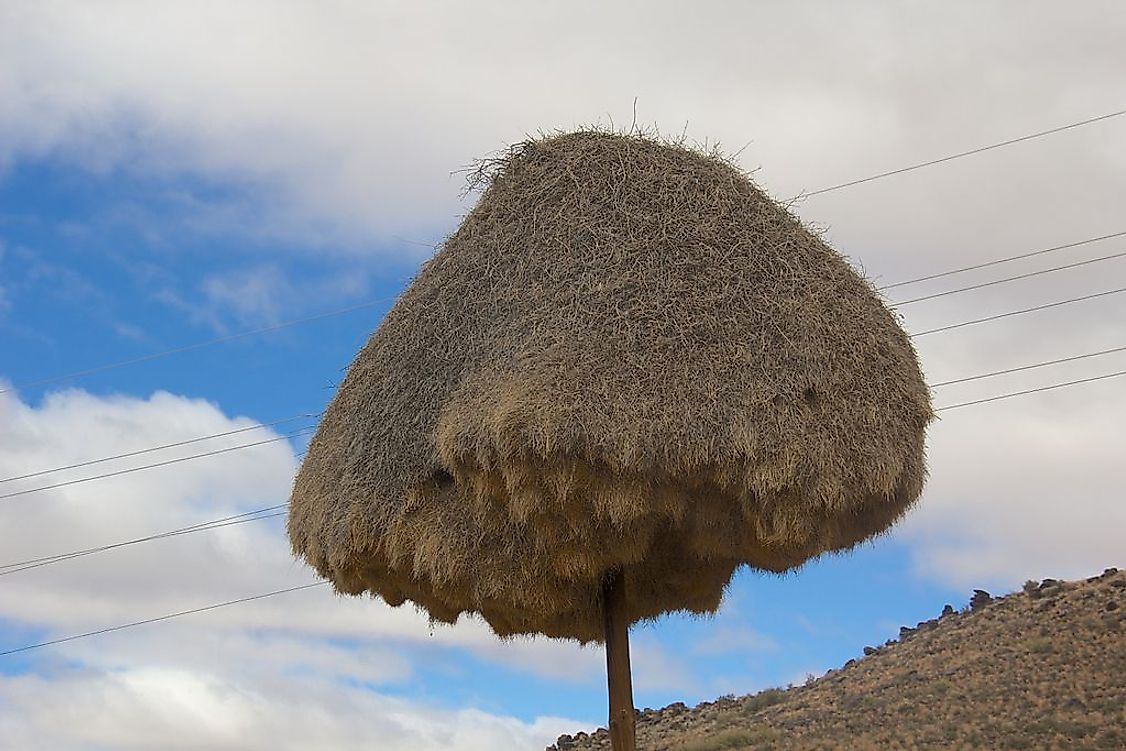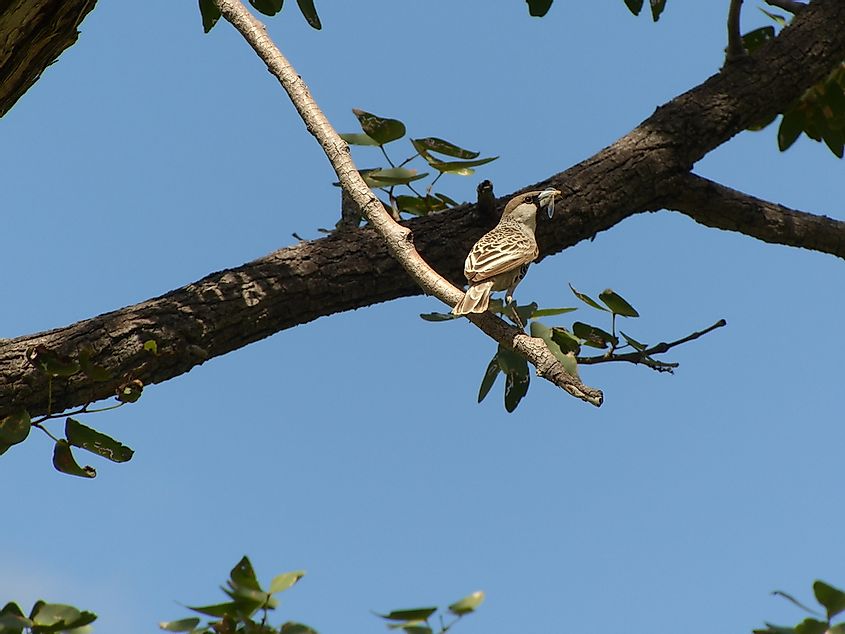Birds Who Build the Biggest Nests

The southern Africa region is inhabited by the sociable weaver, who builds Earth’s largest community nests. Birds build nests for roosting and breeding, and nests differ from species to species, while other birds do not make them at all. Some avifauna species make their nests on the ground while others prefer to build them on trees. Other birds make their nests on rock cliffs while others lay eggs in holes found on trees. Some bird species have exhibited great skill in the construction of their nests such as the social weaver which builds the largest nest of all birds.
Description Of The Social Weaver
The social weaver (Philetairus socius) is classified in the family Passeridae and the genus Philetairus. It was first noted in 1790 by the ornithologist John Latham. Since then, four of its subspecies have been described. The species measures about 5.5 inches and the sexes are not clearly distinguishable. It sports a scalloped back, black chin, and black barred flanks. The bird’s weight ranges between 0.92 and 1.13 oz.
Distribution Range Of The Social Weaver
The social weaver is commonly sighted in Namibia, Botswana, and South Africa. It is most abundant in the Northern Cape Province of South Africa. The species favors the arid savannah, which is characterized by the presence of hard grasses including Stipagrostis and Aristida ciliata. The region where the bird occupies experiences low and unpredictable rainfall.

Ecology And Behavior Of The Bird
The sociable weaver’s diet is primarily comprised of insects. Since it inhabits arid regions, it derives all of its water from the insects. Seeds and plant products also make up part of its diet. The species has been observed to breed when it is nearly two years old. Rainfall determines the bird’s breeding season and breeding may even be avoided during low rainfall. The species raises an average of four broods each breeding cycle in normal conditions. The social weavers care for their young communally.
The World's Largest Nests
The social weaver has gained fame for its elaborate nests built on trees and other tall structures such as electricity and telephone poles. The birds gather different materials and weave the nest twig by twig. The huge nest has separate chambers inside which are made comfortable by use of feathers and soft grass. An individual nest can weigh as much as 2,000 pounds and have more than 100 chambers. Entrances to the nest are created about 250 mm long and 76 mm wide and are fitted with sharp sticks to discourage the entry of predators including snakes. The nests are also long-lasting. Since the birds live in arid regions, the nests provide much-needed shade from temperatures which may reach up to 33 degrees Celsius. During night time and winter, the weaver roost in the central chamber which retain heat. Other bird species also use the weavers’ nests, most notably the pygmy falcon. The nests constructed on electricity poles are prone to fires in summer and short circuits in the rainy season. Other times, the nests can get so water-logged causing the supporting trees to collapse.
Present Status Of The Bird Population
The population of the social weaver is on the rise, mainly due to the proliferation of human-made nesting objects such as telephone and electricity poles. It is listed as "least concern" although there are concerns due to the deforestation of tree species such as Acacia.







